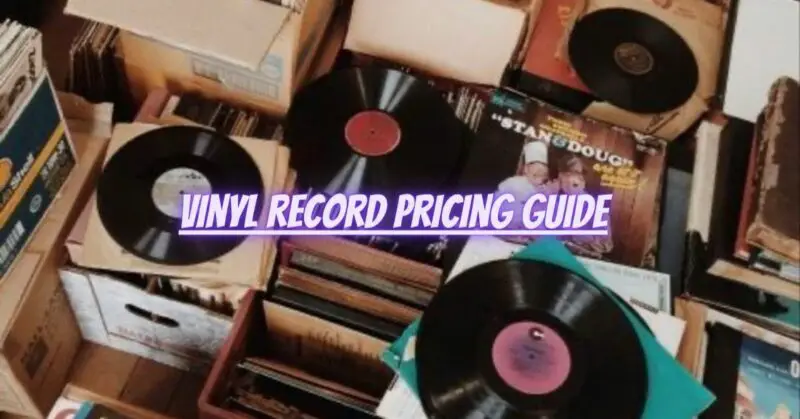Determining the value of vinyl records can be a complex task, as it involves various factors such as rarity, condition, demand, and market trends. Whether you’re a collector looking to assess the worth of your vinyl collection or a buyer seeking fair prices for additions to your collection, having a basic understanding of vinyl record pricing is essential. In this article, we will provide a guide to help you navigate the pricing landscape of vinyl records.
- Research and Resources: To gauge the value of vinyl records, start by conducting thorough research. Explore reputable resources, online marketplaces, record collector forums, and price guides specifically dedicated to vinyl records. Publications like the “Goldmine Record Album Price Guide” and websites such as Discogs and Popsike can offer insights into pricing trends and historical sales data. These resources will help you familiarize yourself with the market and make more informed pricing assessments.
- Factors Influencing Vinyl Record Value: Several factors affect the value of a vinyl record. Consider the following elements when assessing the worth of a record:
- Rarity: Records that are limited in production, contain special editions, or feature unique variations (e.g., colored vinyl) tend to have higher value.
- Condition: The condition of the record and its cover significantly impact value. Records in excellent condition with minimal wear, no scratches, and clean playing surfaces are more valuable.
- Artist and Album Significance: The popularity, historical importance, and cultural impact of an artist or album can influence its value. Seminal albums, groundbreaking releases, and influential artists often command higher prices.
- Demand: The demand for specific artists, genres, or albums plays a crucial role in determining value. Records that are highly sought after by collectors and enthusiasts will typically have higher prices.
- Scarcity: Records that are difficult to find or out of print, particularly those with low availability in the market, tend to be more valuable.
- Grading System: Vinyl record grading provides a standardized way to assess the condition of a record. The most common grading system is the Goldmine Grading System, which ranges from Mint (perfect condition) to Poor (significant damage). Understanding the grading system allows you to communicate the condition accurately and determine appropriate pricing based on condition.
- Market Evaluation: To determine a fair price for a vinyl record, consider recent sales data and market trends. Look for comparable sales of similar records in similar condition to gauge the market value. Take note of the average prices and any significant price variations for specific releases or editions. Remember that prices can fluctuate over time, so periodic evaluation is essential, especially for records with high demand or limited availability.
- Seek Professional Appraisal: For rare, valuable, or highly sought-after records, seeking a professional appraisal may be beneficial. Record collectors’ organizations, specialized dealers, or record appraisal services can provide expert assessments based on their knowledge and experience in the market. Professional appraisal services can be particularly valuable when dealing with unique or exceptionally rare records.
Conclusion: Pricing vinyl records requires careful research, an understanding of market dynamics, and consideration of multiple factors. By utilizing reputable resources, researching recent sales data, assessing the condition of your records, and staying informed about market trends, you can better navigate the pricing landscape of vinyl records. Remember that record values can fluctuate, and pricing is subjective to individual buyer and seller negotiations. Whether you’re buying, selling, or assessing your own collection, a well-informed approach will help you make more accurate pricing decisions and ensure a fair exchange in the vibrant world of vinyl record collecting.

